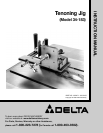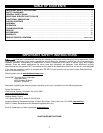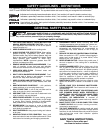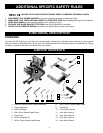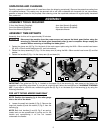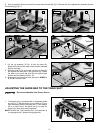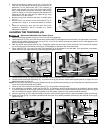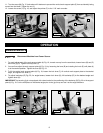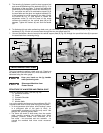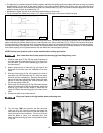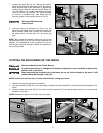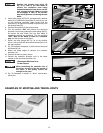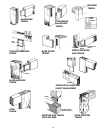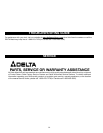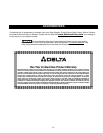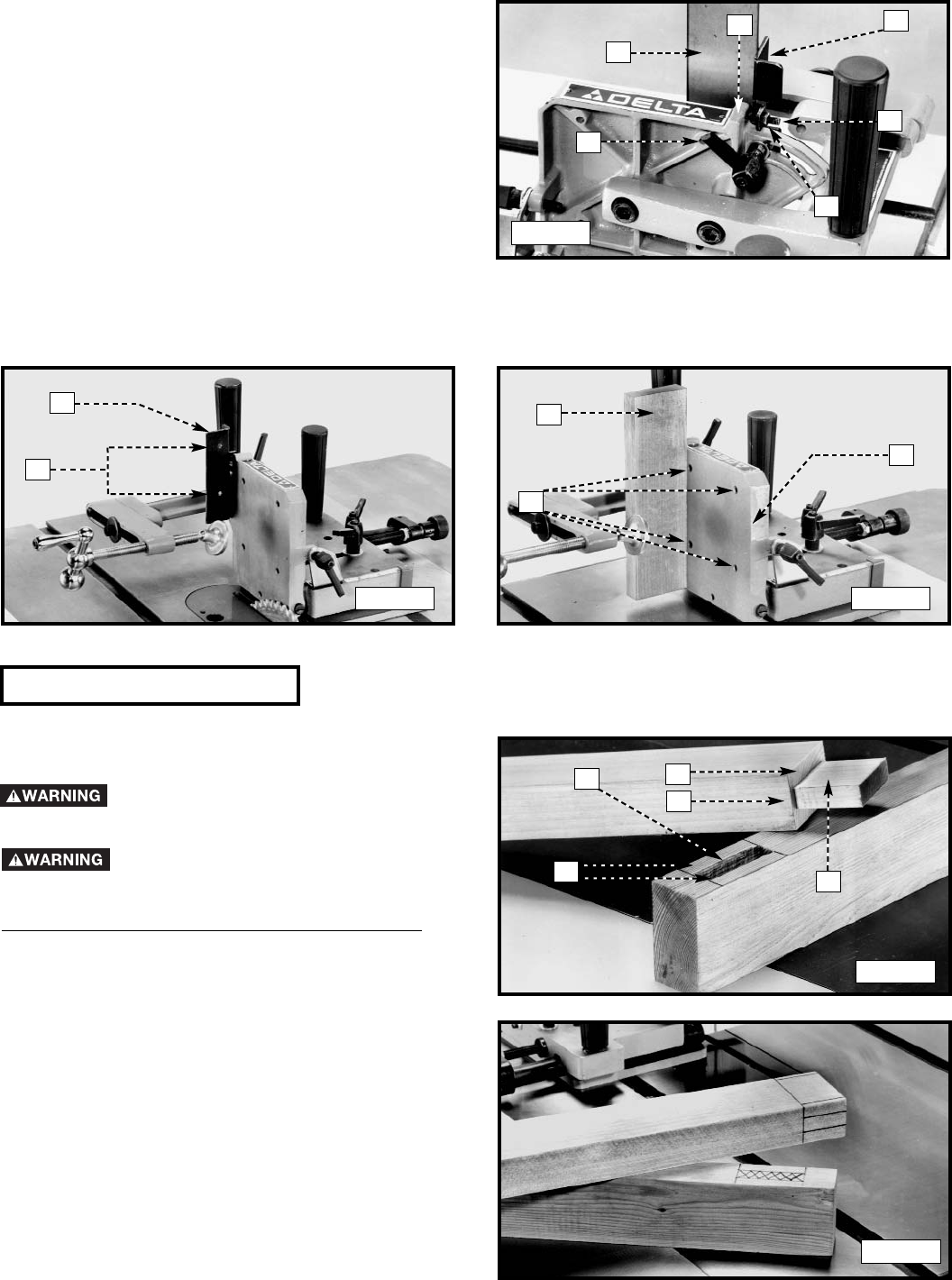
9
J
G
P
R
S
TENONING JIG USE
This jig is intended to perform cheek cuts only. Cheek cuts
are made prior to the shoulder cuts, which are made on a
table saw using the miter gauge.
Keep your hands on the jig handles
when performing cuts.
Disconnect Machine from
Power Source
STRUCTURE OF A MOR
TISE AND TENON JOINT
Parts of a simple or “blind” joint are (Fig. 24):
A. Structural Shoulder
B. Cheek
C. Cosmetic Shoulder
D. Mortise
E. Mortise Walls
Lay out the mortise and tenon on the workpieces (Fig. 25),
but keep these items in mind when laying out the joints:
• To avoid premature joint failure, avoid locating a tenon
in a disfigured part of the grain (a knot), for
unpredictable movement of the joint may occur. Use
straight, flat, common-grained stock.
• The tenon will shrink in width away from the mortise
walls, possibly revealing the mortised hole. When
possible, produce tenons with shoulders on all
four sides - two structural and two cosmetic - to
conceal the mortised hole when wood movement
occurs.
A
C
B
D
E
Fig. 21
Fig. 23
Fig. 24
Fig. 25
5. The tenoning jig features a positive stop to ensure fast
and accurate positioning of the backstop (G) Fig. 21 at
90 degrees to the saw table. To check and adjust the
positive stop at 90 degrees, loosen lock handle (H) Fig.
21, and place one end of a combination square (J) on
the saw table and the other end against backstop (G).
If the backstop is not 90 degrees to the table, loosen
the locknut (K) Fig. 21, and tighten or loosen the
adjustment screw (L) until the head of the screw
contacts the casting on the vertical plate (M) at 90
degrees. Tighten the locknut (K) and lock the handle
(H).
M
H
L
K
N
G
Fig. 22
6. To eliminate chip-out when performing cheek cuts, you can fasten an auxiliary wooden backup board (P) Fig. 23 to the
backstop (G) Fig. 22 with two wood screws through the two pre-drilled holes (N).
7. You can also fasten a block of wood to the vertical support plate (R) Fig. 23, through four pre-drilled holes (S) to prevent
the saw blade from contacting the jig.



